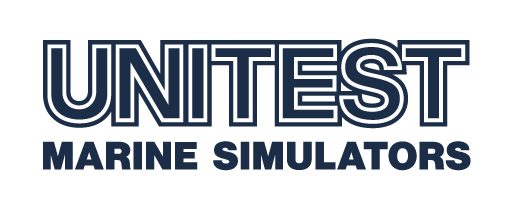SER 2 LNG has been developed to comply with:
- STCW Code: Section A-1/12 and Section B-1/12,
- ISM Code: Section 6 and Section 8.
SER 2 LNG simulator model includes following systems:
- The main engine (steam turbine, two main boilers, fixed pitch propeller).
- The fuel system (DO, HFO and Gas Fuel including the storage system).
- The lubricating system (LO circulation and separator, LO storage).
- The cooling system (sea water).
- The feed and condensate system.
- The power plant (2 turbo generators, 1 diesel-, and 1 emergency generator, power consumers).
- The bilge system with oily water separator.
- The ballast system.
- The steering gear.
The green Checklist window shows instructions relevant to the selected checklist.
The appropriate system window will always open when a new checklist step is shown in the checklist window.
The control lamp, switch or gauge specified in the checklist step “blinks” in order to make it easier to identify.
A scenario is a chain of events that introduce or remove faults from the engine room operation. Each even is described by the following properties:
- Fault name (selected from the given list).
- Fault delay (the delay in seconds between the prior event and the current one).
- Simulation (no fault, stable fault, unstable fault).
The scenarios can be both played and edited with a help of a special scenario editor.
Here is a list of SER 2 LNG main features:
- SER 2 LNG is a highly realistic simulator for ship’s engine room training which can also be used as a low cost introductory simulator.
- The mathematical model simulates a typical ship’s engine room with a steam turbine, its auxiliary systems, power plant, bilge and ballast system.
- The user interface includes all virtual controls and alarms and creates a very realistic environment.
- Mimic diagrams with active valves, pump status indicators, tank level indicators and selected digital gauges make the system easy to use.
- SER 2 LNG includes fully integrated checklists for stand alone learning.
- Multichannel digitised sound provides a very realistic ship’s engine room feel. The sound effects include: propeller shaft sound correlated with engine speed, open starting valve sound, alarm and machine telegraph buzzers. The volume level for all sound channels can be freely selected according to personal preferences.
- The software based SER 2 LNG simulator is available with a desktop type, hardware console.
- SER 2 LNG can co-operate with another PC connected in a local area network. This second PC can be used as an instructor terminal enabling online monitoring of student activities, fault simulation and telegraph communication between a bridge and an engine room.
- SER 2 LNG offers an easy switching between the metric and American unit systems. The main educational tasks which can be accomplished with SER 2 LNG are listed below:
– Learning typical ship’s engine room operating routines.
– Ship’s engine room operation training. The user will be able to accomplish any operational task starting from pre-prepared or previously saved exercises.
– Training in corrective action when faults occur. Different faults can be mixed in the run-time or loaded from disk.
To meet the requirements:
Engine Room Simulator has been developed to comply with STCW Code:
- Section A-1/12 and Section B-1/12
- ISM Code: Section 6 and Section 8








